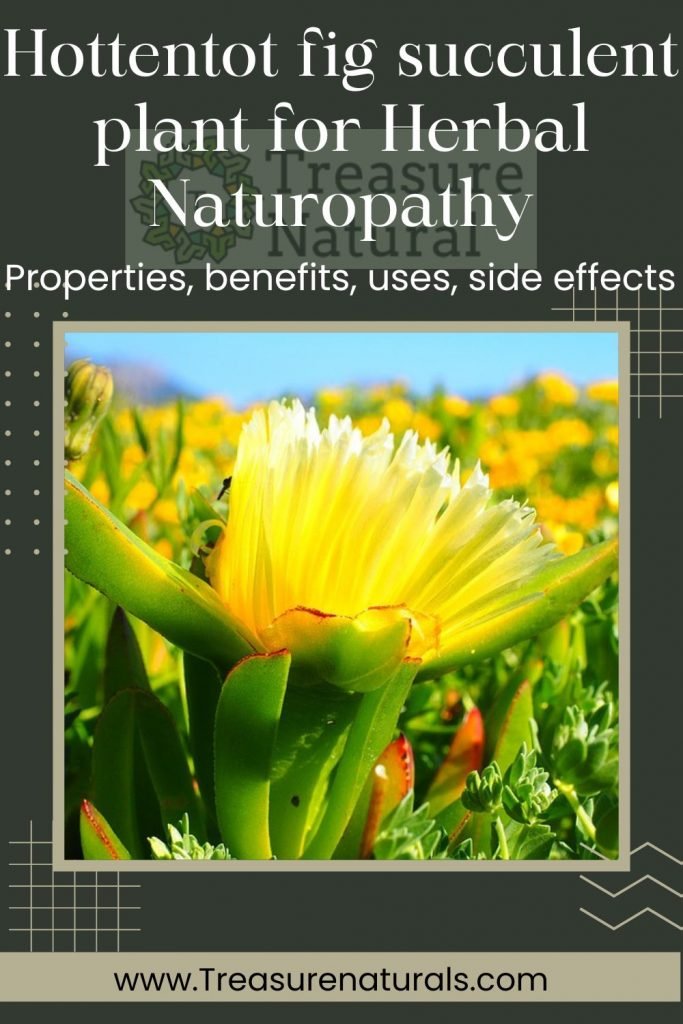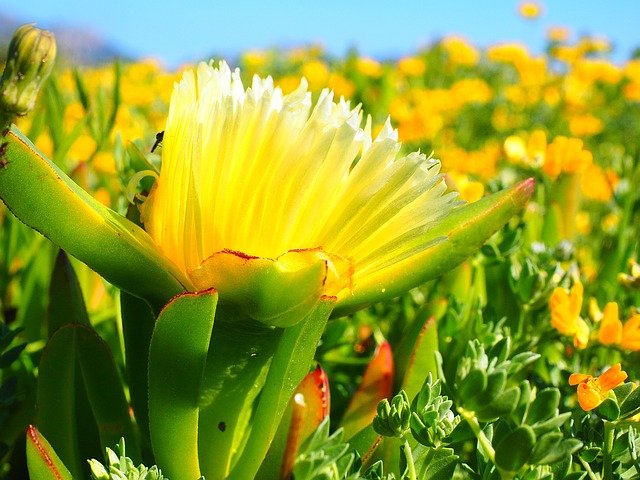
The fig is a succulent plant grown for ornamental purposes for the beauty of the leaves and flowers. In addition to being a decorative species, the fig boasts antioxidant and antibacterial properties and is traditionally used to prevent various diseases and preserve good health.
fig, characteristics of the plant
The Hottentot fig (Carpobrotus edulis) is a small succulent plant of the Aizoaceae family, native to the southern regions of Africa and today spread spontaneously also in our country.
It is a plant with a drooping or climbing habit, characterized by reddish stems and numerous leaves with a triangular section, fleshy and a beautiful bright green. Often the fig is grown for ornamental purposes in rock gardens or to wallpaper walls. This small plant requires little care, can withstand even in drought conditions and in full sun and produces very beautiful, showy and decorative flowers.
The flowering of the fig begins in spring and continues throughout the summer: the flowers sprout numerous, colored in intense pink, red, orange or yellow.
Fig, properties and benefits

The fig contains active molecules including polyphenols, polysaccharides, organic acids and alkaloids responsible for the antioxidant, anti-glycation and antibacterial properties of this plant.
Traditional medicine uses the fig to speed up the healing of skin wounds and prevent bacterial infections. The antioxidant and anti-glycation action of the fig is also useful to inhibit lipid peroxidation and the formation of the final products of glycation.
Glycation causes a sugar to react with a protein or lipid randomly, affecting the functioning of fundamental molecules of our body. An example of the final product of glycation is glycated hemoglobin, that is, linked to glucose, associated with cardiovascular diseases, pathologies of the kidneys and retina and diabetes
mellitus.
The fig can also be used to protect the body from the damage of oxidative stress. In particular, extracts obtained from the fig can prevent neurodegenerative diseases.
The extracts obtained from the fig have finally shown immunomodulating properties, potentially useful to support the body in fighting certain types of cancer, as well as bacterial and viral infections.






